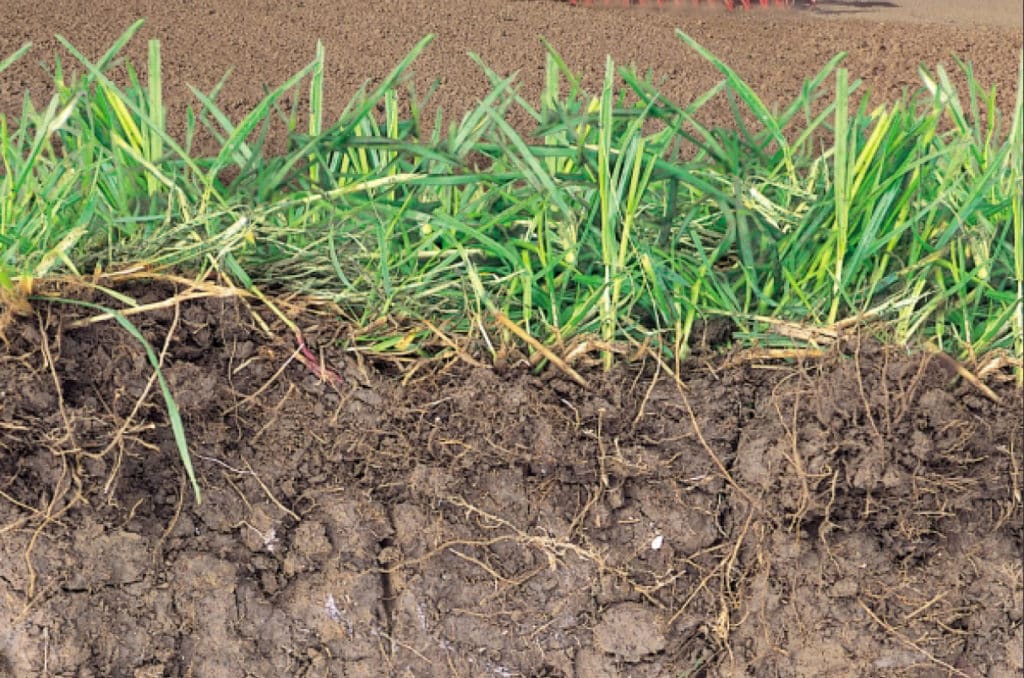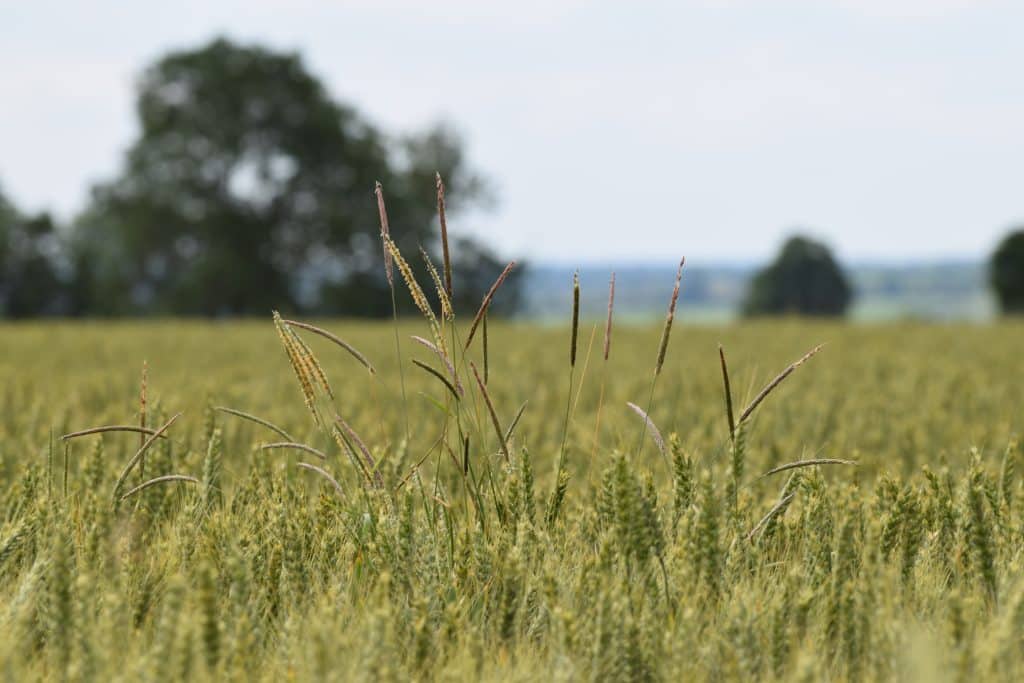Soils focus to tackle black-grass – Farmers Guide
Heavy soils and poor drainage are an ideal combination for black-grass to thrive, but a farm in Cambridgeshire is taking steps to address the issues head-on ...
A recent run of wet autumns and winters has challenged farmers across the country, particularly those on heavier soils, leaving many looking for ways to improve future resilience to such events.
The Hutchinsons black-grass demonstration at Cambourne near Cambridge, kindly hosted by the Clear family at South Sea Farm, is no exception. Featuring predominantly heavy clay soils, and a black-grass population of 200-300 heads/m2 across the 40ha trial area, drainage issues are the site’s “Achilles heel”, according to Hutchinsons technical manager, Dick Neale.
This was particularly evident in the 2023/24 season, when an exceptionally wet autumn and winter prevented winter cereal drilling on the heavy clay soils, resulting in many areas being left unsown until the following spring. This highlighted an important change in black-grass dynamics at the site, where emergence has become later and more protracted, Mr Neale explains.
“Like many farms, South Sea Farm has made great progress in depleting the September and early October-emerging black- grass population using techniques such as delayed drilling and stale seedbeds, however the shifting emergence patterns mean full control is still not being achieved.”
Delaying drilling even later into autumn to catch black-grass emerging from late October onwards with stale seedbeds is simply not viable on heavy land, and spring cropping, while useful, can also be challenging after wet winters, so the team are looking at ‘whole-farm’ solutions.
Building soil resilience
Everything from the integration of catch/ cover crops and new SFI options, to rotational changes, and alternative cultivation strategies are being considered, but underpinning all of this is a concerted focus on improving soil health.
This started by mapping the farm with Terramap high definition scanning to identify any issues and target those areas requiring remedial action. There is also a move to a zero tillage strategy, payment for which will be available through the SFI (SOH1).
Mr Neale says the farm has been transitioning towards no-till for several seasons and different options have been tried to see what suits the farm’s soils best. Last autumn, trials included a demonstration field comparing a disc and tine cultivator versus a low disturbance loosener (LDL), which were both used ahead of sowing winter wheat with the farm’s Horizon drill on 5th October. Early indications are that wheat behind the LDL has established better, with fields being noticeably easier to walk during a wet winter, largely due to the fact that more surface residues have been retained, and natural soil structure and drainage has been protected.
The LDL machine features relatively narrow legs with a low-angled winged point that gently lifts soil, creating fissures that break compacted layers, before letting it gently fall back down. In contrast, the disc and tine cultivator lifts, mixes and breaks the entire working depth, destructuring soil in the process, explains Mr Neale.
“When you then get a heavy rain event, as we did this winter, you can soon end up with a wet, sticky soil that won’t let water infiltrate and pass through easily.
In the first few years of converting to zero-tillage, Mr Neale expects the LDL will be used most seasons to alleviate any compaction, although over time, the need should diminish as natural soil structure and drainage improves. The machine may also be used to establish overwinter cover crops, by fitting a seeder to drop seed down the back of the leg, he notes.
Drainage improvements
Improving drainage is a top priority at the Cambourne site, as the wet 2023/24 season, together with Terramap soil analysis, clearly highlighted several issues that are exacerbating the black-grass threat.
A programme of further ditching and mole draining is underway, although mole ploughing had to halt prematurely last autumn when subsoil dried out too much, leaving around 60ha still to do across the farm, Mr Neale notes.
“It’s one reason why we’re looking at going into the enhanced overwinter stubble option within SFI (AHW7), as it gives us a bit more opportunity to put the mole plough through and rectify drainage issues before sowing a crop the following season.” Terramap analysis revealed the silty clay soil was relatively high in magnesium, creating a ‘tighter’ structure that is likely to impair root growth and water infiltration, and could be harder to work. To address this, some fields received gypsum (calcium sulphate) in autumn 2023 and 2024 to counter the high magnesium content and rebalance the calcium:magnesium ratio, opening the structure, and improving soil friability.
See for yourself
Growers will have the opportunity to view the soil and black-grass management measures being used at the Cambourne site at an open day in early June. Look out for details on the Events section of the Hutchinsons website, www.hutchinsons.co.uk

